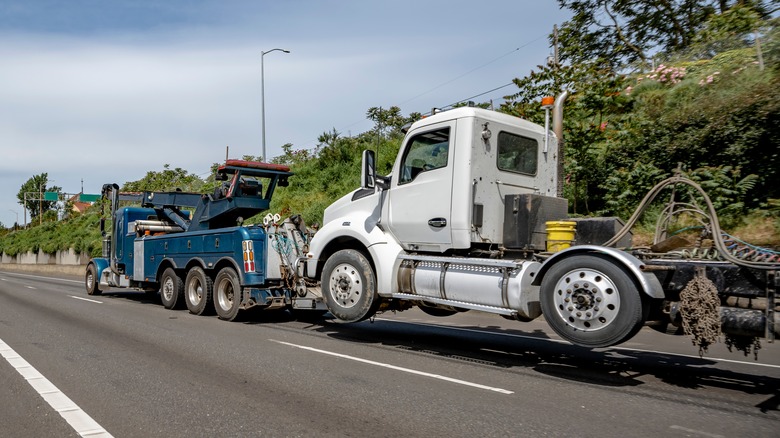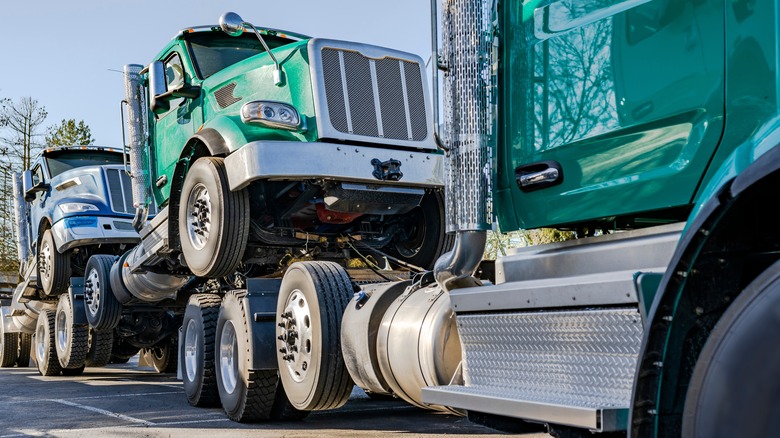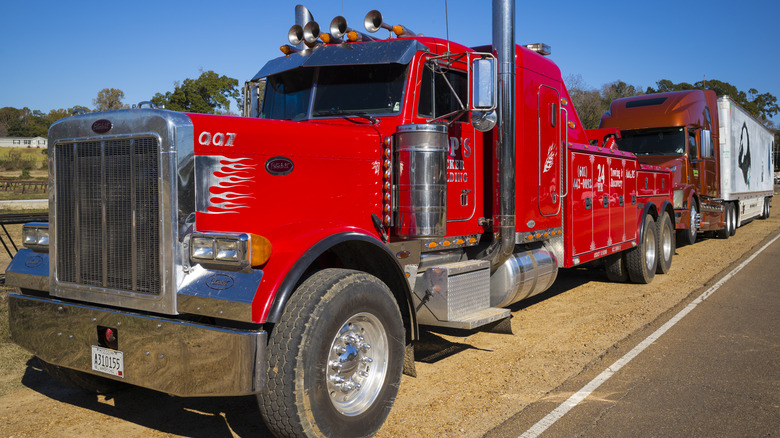How Are Heavy Semi-Trucks Towed If They Break Down?
When a semi truck breaks down on the highway, getting it to safety is nowhere near as straightforward as towing a passenger vehicle. These massive machines weigh anywhere from 35,000 to 80,000 pounds, which means they need a different level of expertise, equipment, and planning than your run-of-the-mill highway breakdown.
Heavy-duty tow trucks are designed with reinforced chassis, powerful diesel engines, and high-capacity booms and winches meant to lift extremely heavy loads. Specialized equipment such as underreach wheel lifts, air cushion recovery systems, lowboy trailers, and rotating boom recovery units make it possible to safely lift and transport semis – even overturned or severely damaged trucks.
The first challenge is also the most obvious: Understanding the situation. What caused the breakdown, and where is the truck located? Whether it be engine failure, electrical issues, tire blowouts, or accidents, each situation requires a strategic approach... especially when you have to account for the safety of the driver and others on the road.
After determining the safest and most efficient way to tow the semi, the next step is stabilization. This involves attaching the towing mechanisms, securing the semi, and, at last, transporting it to a repair shop or holding yard.
What goes into towing a semi
One of the most essential steps when towing a semi is making sure the tow truck is properly connected to the vehicle. The tow operator positions the truck, inspects all towing gear, attaches heavy-duty tow chains or cables to the semi, adds safety chains as a backup, ensures all lighting is working correctly, and then tests the connection before hitting the road. A sloppy or incomplete hookup can lead to serious consequences such as instability, loss of control, or even additional damage to the semi-truck.
Of course, the physical gear needed to tow a semi truck is only half the equation. Just as important is the know-how and regulatory compliance to properly tow the semi. These regulations cover everything from how a load must be secured to weight limits and signaling requirements during transport. Tow operators must be trained in heavy duty towing procedures and certified to operate the equipment. Legal requirements vary by state, but typically demand a proper permit, the right insurance, and a working knowledge of both federal and local transportation laws.
Why you need a professional to get the job done
If your tractor-trailer is stranded on the side of the highway, you probably shouldn't just call up your local tow truck and see if they can help you out. Just like with non-commercial vehicles, there are entire professional towing services dedicated to towing semis after a break down. These experts know how to minimize downtime — a must when every hour a truck is off the road is lost revenue — and often offer 24/7 dispatch, helping you get back to business as soon as possible.
Professional tow operators also know how to prevent additional damage to an already damaged vehicle. Improper towing techniques can lead to bent frames, snapped axles, or damaged suspension systems, not to mention the legal trouble we mentioned above. These pros know how to navigate their way through regulatory minefields, helping to make sure everything from transport permits to safety signage is handled properly.


